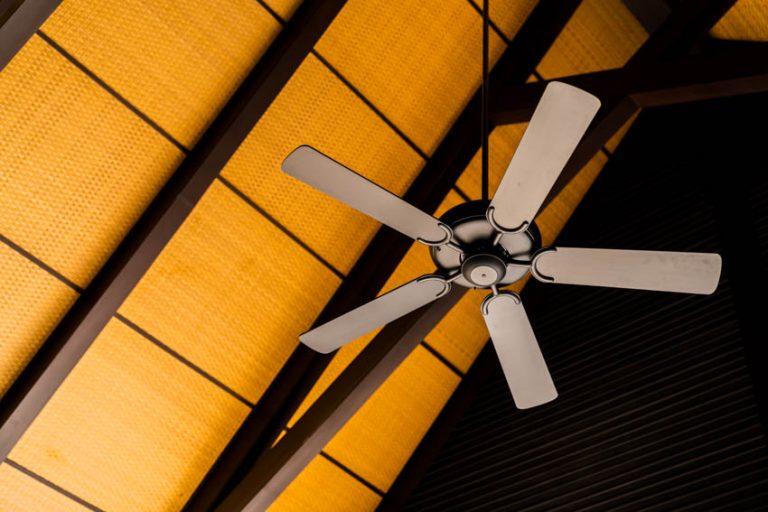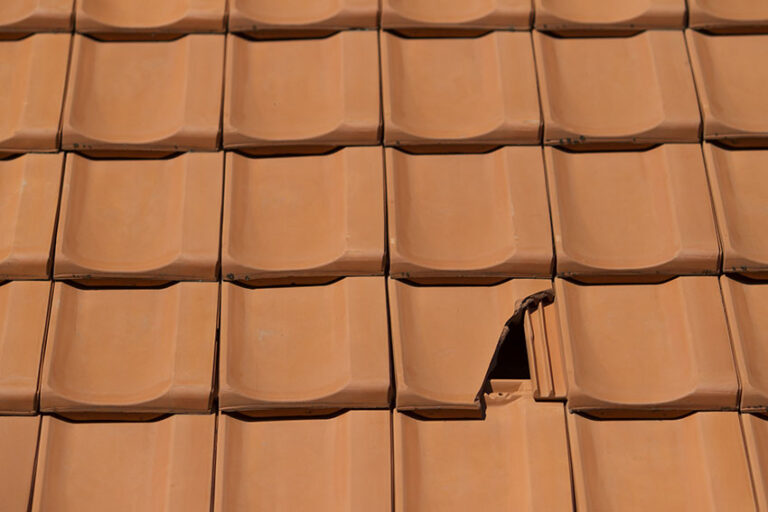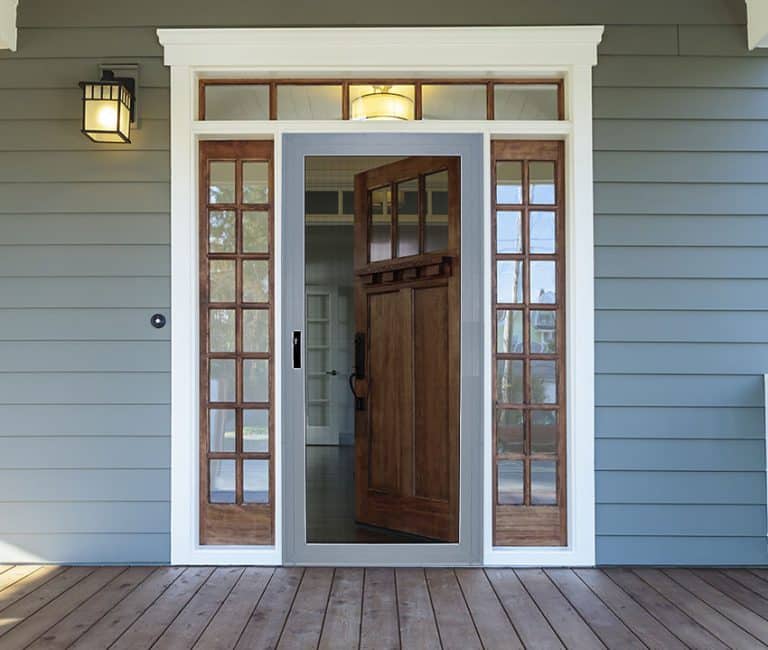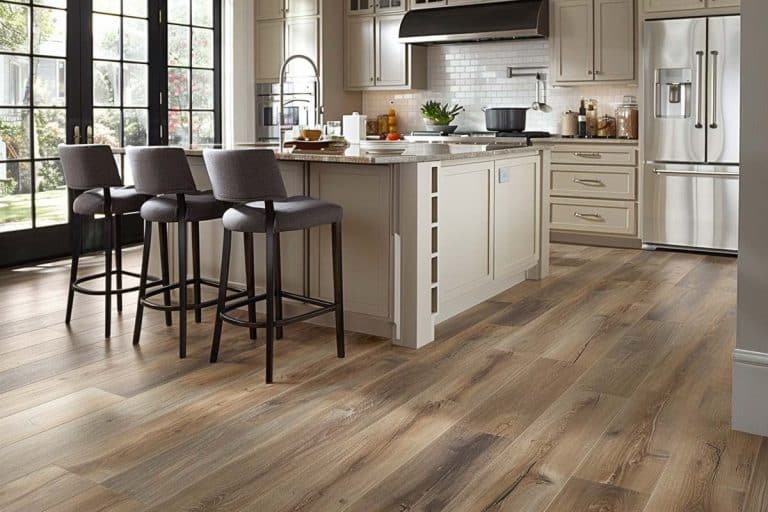Whole House Dehumidifier Pros And Cons
Here we share our whole house dehumidifier pros and cons guide including what it is, how it works, reasons for and against, cost, maintenance, and installation of a home dehumidifier.
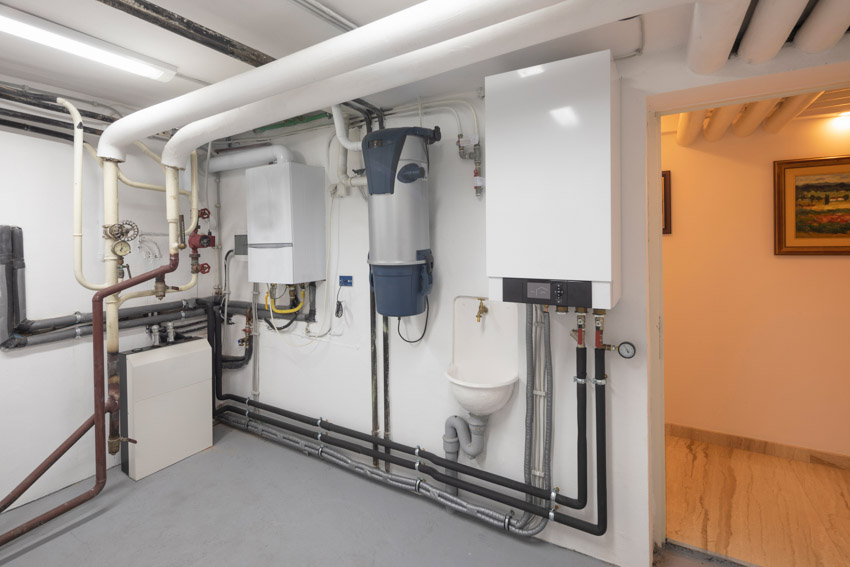 One of the main things you consider a homeowner would be how you’ll make all of the right choices when it comes to add-ons, upgrades, and other similar installations to make the home as comfortable as it can possibly be.
One of the main things you consider a homeowner would be how you’ll make all of the right choices when it comes to add-ons, upgrades, and other similar installations to make the home as comfortable as it can possibly be.
Humidity is one aspect that tends to matter a lot. It goes far beyond making the household feel sweaty and uncomfortable (although it’s mainly that). It also involves making sure that electrical systems and other delicate items and installations in the home that are typically prone to moisture are also protected by keeping humidity in check.
This is where a whole house dehumidifier comes in. It is something that can totally level the playing field and ultimately change the game for you at home.
A dehumidifier may initially sound like a frivolous option at first, but then again, thanks to innovation and the advent of technology, you can better manage the otherwise “unmanageable” things you would’ve considered at home.
In this article, we’ll explain what a whole house dehumidifier does, what its pros and cons are, how much it may cost you, as well as what your installation options are. This way, you’ll be able to make an informed choice before you actually make the decision to get one for your home. [toc]
What Is A Whole House Dehumidifier?

Excess moisture is taken out of the air and collected and dumped into a reservoir or an entire drainage system, depending on how big your dehumidifier unit turns out to be. There are a lot of different types of dehumidifiers in the market right now.
They come in the ducted and portable varieties. But overall, the end goal for all of these humidifiers is to get the home’s humidity level to below 50%. Otherwise, they wouldn’t be deemed effective.
There are a lot of reasons why people would choose to get a dehumidifier installed in the home. It may be because they have allergies. It may be because they prefer that level of comfort that a dehumidifier can provide.
If you’re thinking about getting one for your home as part of its overall modern house design, then you’ve definitely stumbled upon the right article.
We’ll discuss all of the whole house dehumidifier pros and cons, how much it will cost you, along with other details that you will need to know while also giving you a few fast tips so that you can make your decision accordingly.
How Does A Whole House Dehumidifier Work
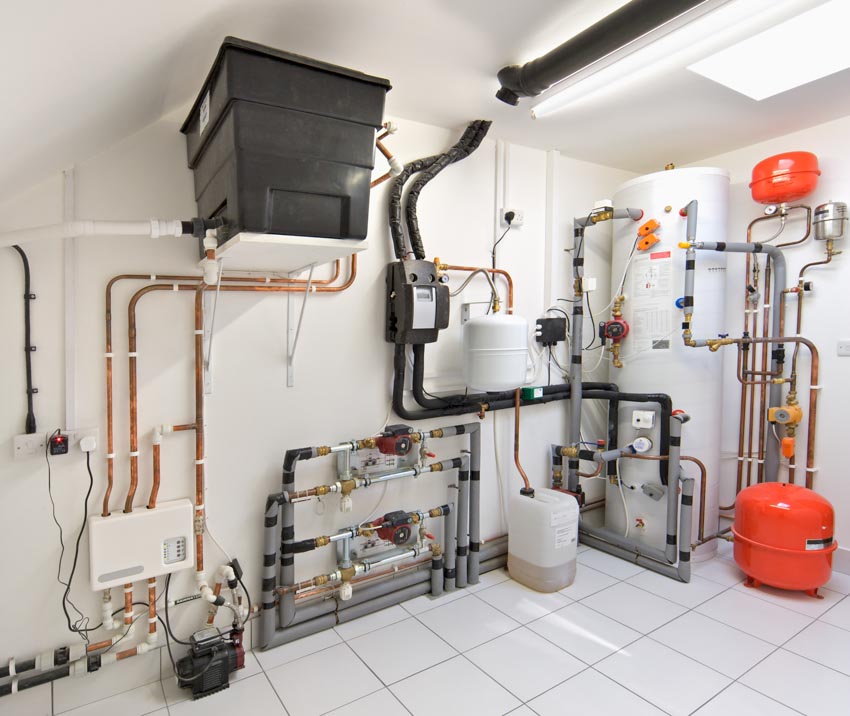
This turns humidity into condensation. As that said condensation accumulates, they need to be emptied out either through a drain in the water line or some type of sump pump connected to it.
As with any major installations in the home, you want to make sure that you know about, not just all about the advantages, but the disadvantages or the drawbacks that come along with it as well.
The recommended humidity level inside the home is always below 50% or within a 40-60% range. There are also a lot of factors that might bring the humidity level either up or down. Here are all of the pros and cons that you need to know about.
Pros of a Whole House Dehumidifier
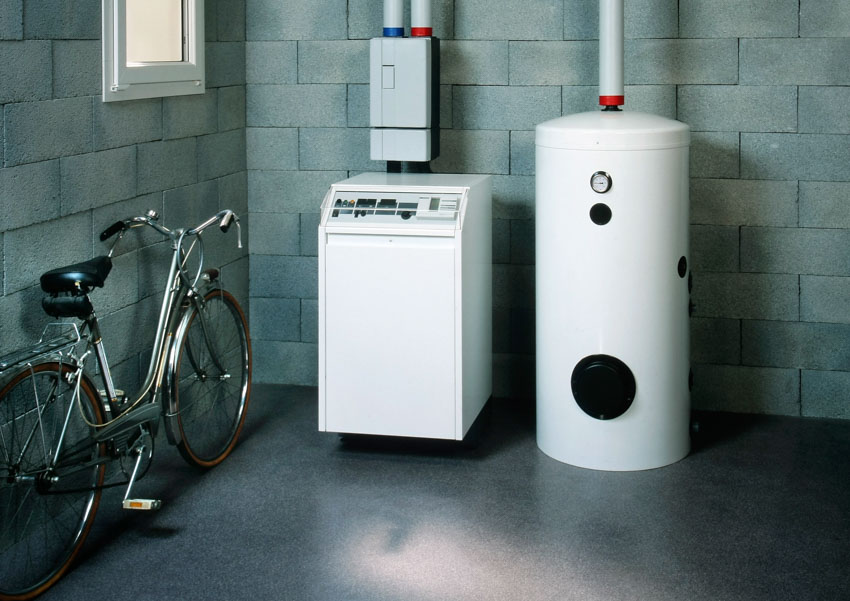
More efficient cooling: At some point, a dehumidifier works in pretty much the same way as with an air conditioning unit. As it proceeds to processing the air in the home, it filters dust out, along with other allergens, and other unsightly elements in the air.
Adding a whole house dehumidifier will keep the whole house cool as it sucks the humidity out of the air and creates and pumps out air that is far easier to breathe. See our list of the types of home cooling systems here.
Better environment and air all throughout: Too much moisture in the home can lead to really serious and damaging problems such as molds and the like.
A whole house dehumidifier can help reduce the occurrence of these potential problems because it removes the moisture particles that can allow the mold to grow in the first place. Other possible problems are related to the floors and wood types of furniture.
Too much moisture can end up causing unwanted odors and even damage because of the humidity. Getting a dehumidifier in the home can make your overall home environment more enjoyable because the indoor air quality is much improved.
Cons of a Whole House Dehumidifier

High purchase cost: There really isn’t any way around it. Getting a whole house dehumidifier is not a cheap undertaking for the home.
As a matter of fact, the cost is one of the biggest reasons why a lot of people are deterred from getting a whole house dehumidifier for their home. It comes with a particularly steep upfront cost.
Depending on the size of your home and your particular needs, a whole house dehumidifier could easily run up to thousands of dollars in upfront costs.
High energy usage cost: On top of that, you would also need to consider the cost to keep one running while you’re at it. It can definitely add to your energy bill. However, despite the costs, it is an investment nonetheless. You just need to figure out which unit is right for you to really make the costs worthwhile.
Whole House Dehumidifier Cost
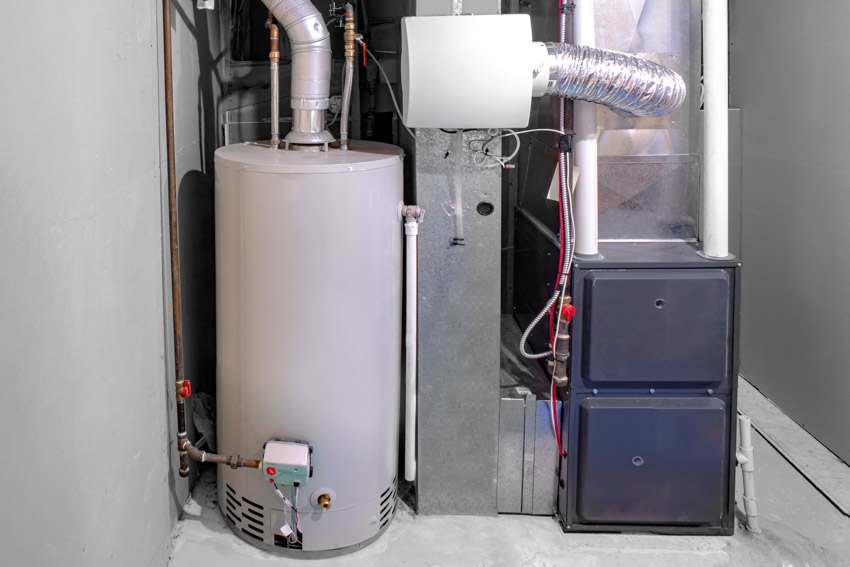
This does not include the cost of the installation on top of the unit yet. In most cases, the cost of getting a dehumidifier unit installed would be just as expensive or just the same as with the price of the unit itself.
The reason for the high installation cost can be attributed to the fact that the licensed technicians you need to hire out would need to integrate everything into the return ductwork of the HVAC system.
So in total, inclusive of installation costs, a whole house dehumidifier unit plus its installation can range from $3,000 to over $5,000.
Here are the cost ranges you need to know about when it comes to whole house dehumidifier installations:
Low End – $1,300
Average – $2,000
High End – $2,800+
Popular dehumidifier brands and their costs:
Aprilaire: $1,000 – $1,700
• Offers 5-year warranties on the units
• Models range from 70 pints to 130 pints
• Has user-friendly controls
• Very sturdy and reliable units
SaniDry: $1,200 – $2,500
• Large capacity units that are highly efficient
• Specializes in crawl space and basement applications
Santa Fe: $1,200 – $2,500
• Units range from 70 to 155 pints per day
• Specializes in crawl space and basement applications
Honeywell: $1,000 – $2,000
• Offers 5-year warranties on the units
• Comes in a wide range of variants: 65-pint, 90-pint, and 120-pint capacities
Wave: $1,500 – $1,700
• Offers more efficient and eco-friendlier versions of dehumidifiers which they call as “ventilation types”
• Offers 10-year warranties on the units
• Large capacity units that have lower operational costs than the other brands
• Actual effectiveness of the brand’s units are still being debated about
Here are the other factors which might end up affecting the overall cost of your unit as well as its installation:
• The actual capacity of your whole house dehumidifier unit
• If there happen to be any additional designated outlets
• If there happen to be any additional designated return ducts
The level of access difficulty in the installation area, which is subjective depending on the actual area specifics as well as the quote of the technician who will be initiating the installation.
Repair Prices And Troubleshooting For Whole House Dehumidifiers
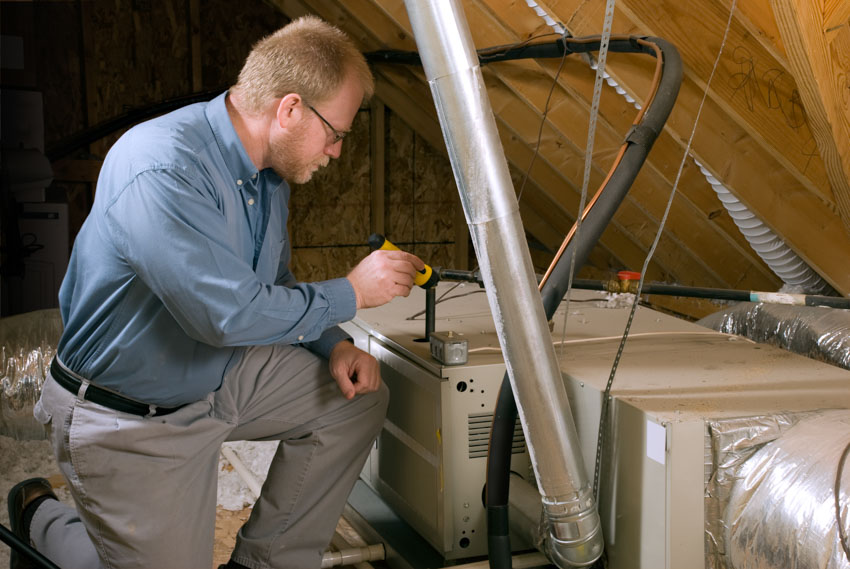
The typical formula for a whole house dehumidifier repair cost would include a base fee, the price of the materials or parts that need to be replaced, and then an hourly rate to be charged by the technician. The base fee ranges at $50-$100 while the hourly rate ranges at $50-$70 per hour.
If the problems are fairly minor, you might be able to fix any problems with the unit yourself with the use of your user manual or a walk through call from the unit’s manufacturer.
It’s important for you to opt to make the call first so that you don’t end up voiding your warranty during the repair process.
If the issues are beyond what you are capable to troubleshoot yourself or if there is some level of difficulty when it comes to accessing the unit, it would be best to call up a certified HVAC technician instead.
Here are the common issues whole house dehumidifiers come across with:
• Icy or dirty coils: When the coils in your unit are dirty or are blocked, this will cause your unit to either function poorly or end up not working at all.
You can usually easily clean or de-ice them based on the instruction in your manual before you proceed with calling in repairs to save up on costs.
• Power malfunctions: In the event that your unit fails to turn on, it can usually be attributed to either faulty power cords or tripped breakers.
• Component failure: There will be instances wherein your dehumidifier unit might leak or overflow. This can usually be attributed to a broken float switch. This is because several of the components in your unit might break or wear out over time. If it fails to start, there might be a need to go ahead and replace your humidistat.
• Blockage: Other reasons that leaks and overflows are happening might be because of clogged hoses or drains.
• Freeze-up issues: Most of these units come in refrigerant styles so they always run the risk of encountering freeze-ups if the temperature falls below 60 degrees.
This is unless they are particularly built or rated for lower temperatures, of course. If your system still freezes during warm temperatures, these are the possible reasons:
1. The deicer is faulty
2. Low on refrigerant
3. The airflow is blocked
4. There’s a problem with the compressor
• Loud or irregular noises: This might mean that there are screws and other parts that have gone loose because of the vibrations coming from the unit.
• Smells: This can be caused by coils that have gone dirty or there may be old and dirty water stuck in the coils.
Cleaning And Maintenance
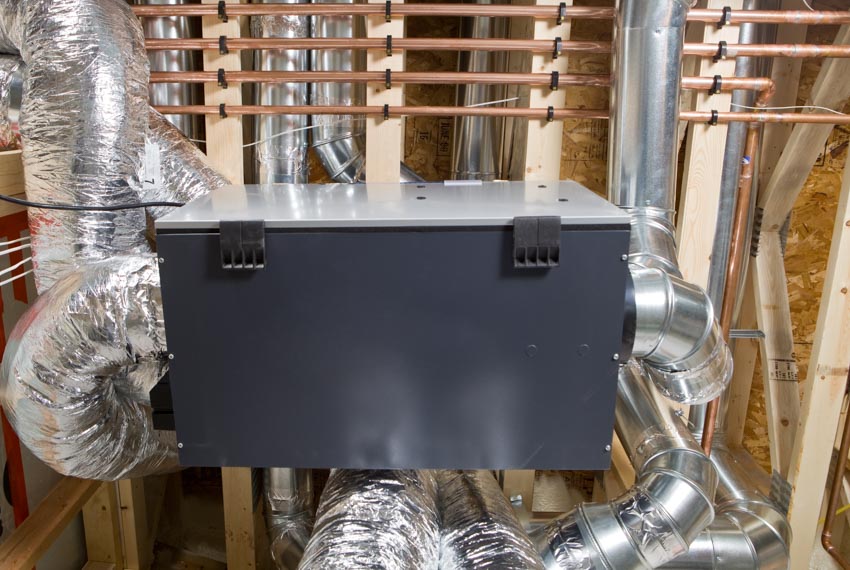
• Check the humidistat: Your humidistat should always be set properly. If set too low, your unit might end up working too hard and wasting energy more than what’s necessary.
If set too high, you won’t end up using the unit to its fullest potential.
• Change out the filter: You will need to change the filter out at least once a year. However, it certainly wouldn’t hurt to check periodically midway through the year and get it cleaned if applicable.
Take note that no tall filters are washable so make it a point to check your manual for guidance as well. for related information, read more about furnace duct cleaning pros and cons here.
• Check and clean out your coils: The coils should be cleaned out at least once a year as they tend to get dusty.
Not cleaning them out can cause bacteria and mold to get into the water reservoir and into the corresponding plumbing fixtures, such as the different types of water softeners or heaters.
This can be hazardous for your household’s health.
• Check your pumps and motor: There will be instances wherein you might need to lubricate the motor especially when it comes to large-capacity models.
• Monitor the water: Some units come with reservoirs while some come with hoses and drainage. You need to make it a point to keep an eye on the water as much as possible.
If you happen to have a reservoir unit, make sure that you don’t allow the container to get totally full or else your unit might shut down. If you have a drainage-style unit, make sure that the water isn’t blocked and is draining out properly.
Whole House Dehumidifier Without Ducts
A whole house dehumidifier that doesn’t have any ducts might seem like a visually appealing option to go for but it isn’t a very practical one. It can come along with a lot of problems.
Most homeowners encounter issues like they need to be run side by side an air conditioning unit full time. There would also need to be an independent portable dehumidifier unit to really effectively get rid of the moisture and this means extra noise and energy costs in the process.
It requires simple ductwork that you can either install yourself of get a technician to install for you. It would really be best to just go for units that have ducts for a smoother operation.
How To Install Whole House Dehumidifier
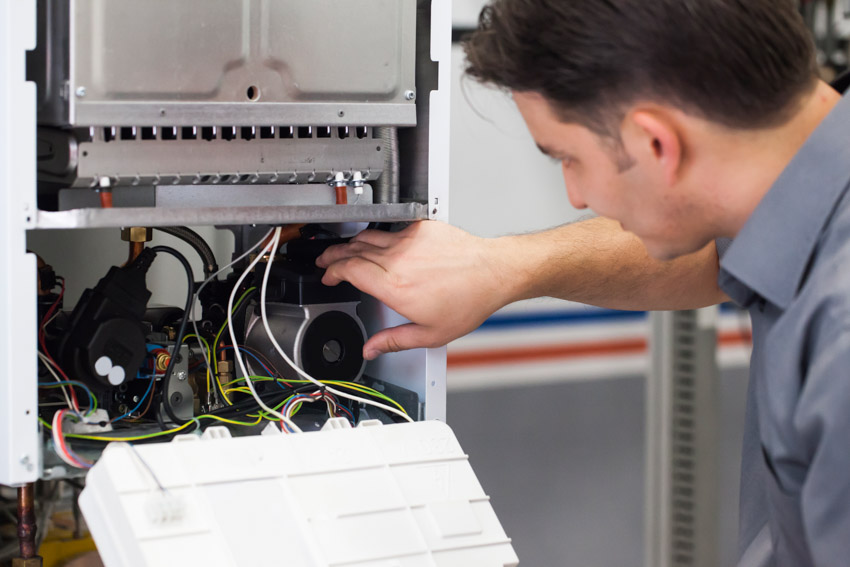
First, get a new return duct installed in your home. This is a particular requirement for homes that have more than one story. It needs to have its own grille, very similar to your main HVAC return.
Second, get a supply plenum that discharges dry air into it. This will allow your unit to pull the air through your return duct, remove the humidity, and then dump the dry air into the same supply plenum that you have connected to your main HVAC unit.
Measure the static pressure and proceed with making minor adjustments as you go along. If your AC and dehumidifier units are running at the same time, there’s a good chance that you might end up with some excess static pressure on your system.
Some additional static pressure might be OK if your ducts are big enough to take it.
Regardless, you need to measure it out to make sure that it doesn’t get too high. If it happens to be too high, you should set the dehumidifier unit to operate independently from your main HVAC system to relieve it.
Will A Dehumidifier In The Basement Help The Whole House

A non-portable one will definitely help though and as a matter of fact, it’s recommended to get it installed in the basement area as it’s the most humid part of the house.
You just need to make sure that you get a unit that’s built to work in low temperatures and has the proper pint rating and square-foot capacity that will accommodate your entire home.
Can One Dehumidifier Do A Whole House
Yes, it definitely can. This is the beauty of whole house dehumidifiers. These units can accommodate up to as much as 5,000 square feet or even more. This is the typical square footage of most homes these days.
See more related content in our article about how much does it cost to furnish a house on this page.

